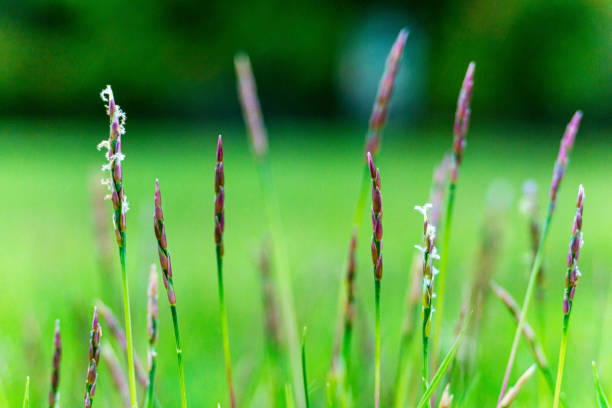Imagine stumbling upon a wild patch of emerald-green blades that shimmer like glass in the moonlight. The wind whispers through it, and for a moment, the world hushes. That’s lyposingrass for you—a mythical plant caught between legend and reality. Though it hasn’t graced mainstream science textbooks (yet), lyposingrass is making its rounds through whispered tales, alternative wellness blogs, and eco-enthusiast forums. But what is it? Where did it come from? And why are people increasingly fascinated by it?
This article dives deep into the legend, the lore, and the little-known lifestyle uses of lyposingrass. We’ll explore what sets it apart from your average backyard greenery, how it allegedly boosts everything from mood to memory, and whether there’s more to this plant than just fantasy.
What Exactly Is Lyposingrass?
The Legend Behind the Name
The term lyposingrass first surfaced in folklore archives dating back to the 1600s, reportedly mentioned in the Whisperwood Chronicles, a now-lost manuscript believed to document herbal lore from the Scottish Highlands. According to these tales, lyposingrass grew only in places where silence had been kept for a hundred years. Magical? Maybe. Spooky? Definitely. But definitely intriguing.
The name is said to derive from an Old Norse term, lyposin, meaning “dreamlike silence,” combined with grass, obviously referring to its plant form. Together, the name paints a picture of a tranquil, possibly sacred plant with ties to quietude and deep reflection.
Is It Real or Just a Myth?
Good question! While there are no scientific entries for “lyposingrass” in botanical databases (yet), a growing number of plant hunters, wellness seekers, and eco-mystics claim to have encountered it in obscure wilderness areas—usually in undisturbed valleys or forest clearings.
Here’s what those who claim to have seen it say about its physical features:
-
Blades are soft, semi-transparent, and emit a faint glow in low light.
-
Emits a calming fragrance that’s described as “sweet ozone with a hint of peppermint.”
-
Hard to cultivate; it reportedly wilts under artificial lights or when exposed to metal tools.
So is it real? Perhaps not in the conventional sense. But as we know, some truths begin as myths.
Why Lyposingrass Has Captured Modern Imaginations
The Wellness Connection
In a world obsessed with superfoods and adaptogens, lyposingrass has found a curious niche. Herbalists and nature shamans (yes, that’s a thing now) claim that consuming lyposingrass tea or oil infusions can:
-
Alleviate stress and anxiety.
-
Enhance lucid dreaming.
-
Improve clarity and memory.
-
Assist in emotional regulation.
While these claims are anecdotal at best, testimonials are pouring in from wellness influencers, who swear by their secret stash of lyposingrass tincture. It’s not available commercially—yet. But small apothecaries are allegedly offering micro-doses in exclusive circles.
Eco-Spiritual Symbolism
Many consider lyposingrass a spiritual symbol of stillness and connection. Because it allegedly grows only in untouched silence, people believe it reflects our need for peace, solitude, and reconnection with the Earth.
Some even treat it as a living oracle—meditating near lyposingrass patches to seek guidance or spiritual clarity. Sounds far-fetched? Maybe. But then again, so did the power of mushrooms, crystals, and fermented tea not too long ago.
The Allure of the Unknown: Lyposingrass in Pop Culture
A Plant of Mystery in Media
Lyposingrass has started to show up subtly in pop culture. Indie video games feature glowing grass that offers special powers in silent zones. A niche horror podcast, Still Roots, mentioned lyposingrass in an episode involving an ancient forest cult. Even an animated fantasy series—Skyvale Chronicles—showcases a “dream-grass” that heals the main character when she’s struck by lightning (a subtle nod, maybe?).
These references keep the legend alive and stretch its roots even deeper into our collective imagination.
Online Communities and Lore-Building
Reddit threads, Discord lore channels, and Tumblr fandoms are actively speculating about:
-
Hidden locations where lyposingrass might grow.
-
Whether it can be “awakened” by rituals or frequencies.
-
If consuming it could unlock dormant human abilities (think telepathy or remote viewing).
Sure, a lot of it is fiction, but it reflects how hungry we are for wonder, nature, and the arcane.
Alleged Benefits of Lyposingrass (According to Believers)
If you’re curious what the buzz is about, here’s a snapshot of what lyposingrass believers claim:
-
Dream Enhancement
“I drank a tea made from dried lyposingrass during a silent retreat, and my dreams became like living art,” claims one anonymous Redditor. -
Mood Regulation
Some swear by its relaxing aroma, which they say works better than lavender or chamomile. -
Energetic Cleansing
Used like smudging sage, people wave dried lyposingrass bundles through spaces to “reset the vibe.” -
Aura Amplification
While purely metaphysical, certain new-age practitioners argue that lyposingrass amplifies one’s personal energy field.
Could Lyposingrass Be the Next Green Gold?
Commercial Potential
If someone actually manages to cultivate and commercialize lyposingrass, it could rival the success of CBD, ashwagandha, or even ginseng. But with the plant allegedly resisting artificial environments and mass harvesting, it remains elusive—like nature’s own gatekeeper.
Entrepreneurs are already preparing:
-
Limited edition teas infused with “lyposingrass essence.”
-
Ambient soundscapes inspired by lyposingrass fields.
-
Digital NFTs claiming to “store” the plant’s frequency (yes, really).
Ethical Concerns
If it is real, should we even try to monetize it? Its rarity and mystical origins raise serious ethical questions:
-
Could overharvesting damage its fragile ecosystem?
-
Will commercialization destroy the mystique and sacredness?
-
Should it remain untouched as a symbol of what can’t (and shouldn’t) be commodified?
FAQs About Lyposingrass
Q1: Is lyposingrass an actual plant or a fictional creation?
It’s not officially recognized by science or botany, but legends and anecdotes treat it as a very real, albeit elusive, plant.
Q2: Can I grow at home?
According to lore, it doesn’t survive under artificial lights or in noisy environments. So unless you’ve got a cloistered stone garden in the middle of a forest… maybe not.
Q3: What does lyposingrass taste like?
Those who claim to have tried it describe the taste as grassy with hints of mint and “a strange sweetness that fades quickly.”
Q4: Is there any proof it has healing properties?
Nothing clinical or peer-reviewed yet—just stories, testimonials, and a whole lot of mystery.
Q5: Where can I find lyposingrass products?
Right now, nowhere reliable. If someone offers you some online, be skeptical unless you trust the source.
The Whisper in the Wild: Final Thoughts on Lyposingrass
In a world rushing toward synthetic everything—AI, automation, artificial flavors—the allure of something wild, ancient, and untamable like lyposingrass is undeniable. Whether it’s an elaborate myth, an undiscovered botanical marvel, or a metaphor for stillness and connection, offers more than intrigue. It offers hope—that not everything magical has been cataloged or contained.
Maybe you’ll never find a patch of lyposingrass. Maybe it only grows in the imagination. But if you’ve felt drawn to silence, to nature, to some inexplicable longing for something more—maybe you’ve already brushed against its whispering blades.







